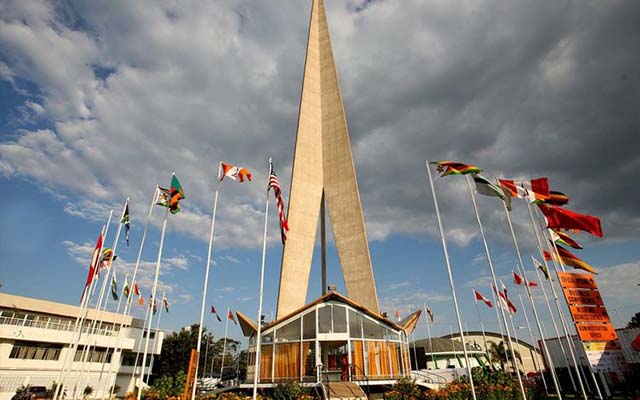Zimbabwe on positive trajectory
Today is World Water Day. It is a day set aside by the United Nations in 1992 following the landmark United Nations Conference of the Environments and Development in Rio de Janeiro, Brazil.
The day was put aside to help people and member states appreciate the critical and strategic role that water occupies in the any country’s socio-economic development.
The day is also meant to draw the attention of policy makers to issues that continue to militate against the realisation of universal access to water.
The importance of water for any society has since been elevated on the United Nations agenda with the Sustainable Development Goal number 6 specifically speaking to issues of water and mandating member states to take practical steps towards to, at the very least, reduce by at least half, the number of people lacking access to safe water and at the very best attain universal access to water by all citizens.
The United Nations’ Agenda 2030 also envisages a world free of poverty, hunger and disease by 2030.
With Zimbabwe being a UN member states, the country is firmly on a positive trajectory towards the fulfilment of Agenda 2030 and SDG 6.
This year’s World Water Day theme; Leaving no one behind is a clarion call for policy makers to be inclusive and comprehensive as they march towards the 2030 vision of water for all.
It calls upon them to ensure that the concerns and voices of the vulnerable groups such as women, children, the elderly and the disabled are taken care of in the formulation of policies that seek to address issues of access to water by all.
In Zimbabwe, the theme fits quite well into the Government’s drive to transform the country into a middle class economy by 2030.
The government has therefore been making significant strides towards ensuring that citizens have access to water for domestic use, agricultural use, power generation and sanitation needs.
Since independence, Government has extensively invested into the development of potable and raw water infrastructure to service the needs of both rural and urban communities.
The formation of the Zimbabwe National Water Authority (Zinwa) in 2000 and the 1998 water sector reforms ensured that water resources management became highly inclusive, comprehensive and stakeholder driven.
To date Zimbabwe ranks among the countries with the highest number of dams.
Over the years, Government has invested in the construction of water infrastructure such as Tugwi Mukosi Dam, Bubi-Lupane Dam, Matezva Dam, Osborne Dam, Mtshabezi Dam and Pipeline, Wenimbi Dam and Pipeline as well as Mutange Dam. Construction of other dams to reduce water accessibility gaps in the country is also ongoing with the construction of Marowanyati Dam, Semwa Dam, Gwayi Shangani Dam, Tuli Manyange Dam, Chivhu Dam and Bindura Dam already under way.
Strides have also been recorded in the quest to ensure that potable water is available to rural communities. To date, Zinwa, which the Government’s water resources management lead agency, manages in excess of 534 water supply stations dotted around the country’s growth points and rural service centres.
These provide safe drinking water to millions of Zimbabweans who reside outside the major urban centres.
After learning critical lessons from past droughts, the Government came up with the Command Water Harvesting Programme which sought to improve access to water by rural communities, who in many countries are overlooked when developments are done.
The programme entails the construction of weirs and small dams with communities providing labour while Government provided cement with Zinwa providing technical assistance that include designing of the water bodies and the supervision of construction work.
Under this programme, 48 weirs have been completed while 158 are at various stages of construction.
These small water bodies are proving to be a game changer for communities as they have impacted on food security and poverty alleviation.
The programme has also seen 201 boreholes being drilled around the country for improved access to safe drinking water by communities.
All these efforts and endeavours put Zimbabwe in a very firm and positive trajectory towards the realisation of Sustainable Development Goal 6 and the attainment of universal access to water by 2030.
Of course various challenges continue to threaten to reverse these efforts in the form of pollution, climate change and siltation but these are surmountable.
For more information you can contact the Zimbabwe National Water Authority Corporate Communications and Marketing Department on [email protected]. You can also follow us on Twitter @zinwawater.








Comments